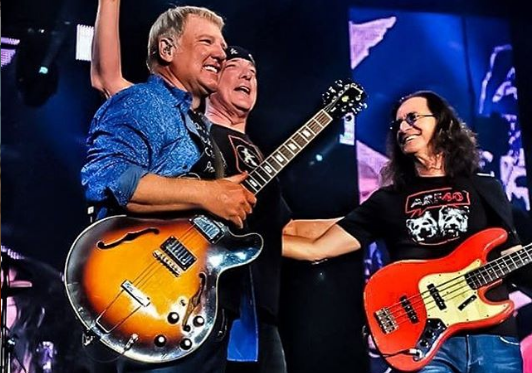This Canadian trio had a trajectory of more than 40 years, in which they played all the styles, they adapted like nobody else to the changes in the music market and they were references for other bands that we love such. We look back at the Greatest 80s Rush Songs:
#1 The Spirit of Radio – Permanent Waves (1980)
A more radiant sound deliberately sought, that brings them closer to the time they were entering, the 80s. Although many progressive bands did not adapt well to these sounds, it was not the case of Rush, who understood that the moment required them another sound and, above all, take advantage of those new tones. Also, the guitar riffs are wonderful.
#2 Freewill – Permanent Waves (1980)
The progressive hard rock of Rush was revitalized with the new sound contributions, and as is logical to suppose, the most accessible songs such as The Spirit of Radio and Freewill became the delight of radio stations of the time, that is to say , they became a resounding success that catapulted the Canadian trio to the first division of world rock.
#3 Tom Sawyer – Moving Pictures (1981)
The definitive theme we associate this Canadian trio with, along with the next one on the list. On this album they found the perfect balance between their hard rock beginnings, their progressive heart and the evolution towards the era of synthesizers.
#4 Limelight – Moving Pictures (1981)
This peachy talks about the problems of Neil Peart (drummer and main lyricist) to deal with everything that brings fame. Ironically, the subject led them to become even more popular.
#5 YYZ – Moving Pictures (1981)
The Toronto Airport Code ended up being the title of Moving Pictures’ instrumental song. On the album it lasts four and a half minutes, but almost reaches eight minutes when Peart puts that demonic solo live. For decades it remained fixed on the band’s set, in addition to being the perfect sample for the three members to show their ability.
#6 Red Barchetta – Moving Pictures (1981)
This incredible song was inspired by the futuristic tale “A Nice Morning Drive” written by Richard Foster and published in the November 1973 issue of Road & Track magazine. History describes a similar future in which increasingly stringent safety regulations have forced automobiles to evolve into massive modern safety vehicles (MSVs) capable of withstanding a 50-mile-per-hour (80 km / h) impact. without harming the driver.
#7 Subdivisions – Signals (1982)
After Moving Pictures, Rush ended up getting into the ’80s commercial sound with Signals. Subdivisions, featuring Lee’s 7/4 synth riff, showed that Peart, and the entire band, could move in a pop format without sacrificing the sound that made them progressive legends. It also has one of the saddest lyrics the drummer wrote, about suburban alienation and teenage pressure to “settle or get out.
#8 The Enemy Within – Grace Under Pressure(1984)
With the tenth album, Grace Under Pressure, Rush made it clear that he could enter the new wave sound, with shorter songs and less complex structures, without losing that progressive spirit. As always, Peart’s percussion was essential to that evolution. The timpani and blocks he used in the ’70s became the back of his kit, allowing him to play faster and with greater precision. The Enemy Within sums up this Peart: In the verses, his hi-hat fills the space between Lee’s funky bass and Lifeson’s skater guitar. Once again there was the influence of Stewart Copeland.
#9 The Big Money – Power Windows (1985)
This great song from the Power Windows album reached # 45 on the Billboard Hot 100 and # 4 on the Mainstream Rock chart. The title comes from John Dos Passos novel The Big Money, part of his American trilogy.
#10 Time Stand Still – Hold Your Fire (1987)
We admit it, we choose this song above all because of how bizarre the video clip is, which seems to me to be one of the most outrageous and shameful along with some of Mick Jagger’s of the time (late 80s, a fascinating time). Come on, it seems that some of them have just been given a chroma. Of course, the song is still a pop-rock nugget that could well have been signed by A-Ha, Roxette or a group of the time. And yet it is perceived that behind the drumsticks there is something out of the ordinary. God, if you’re there, thanks for rush.

